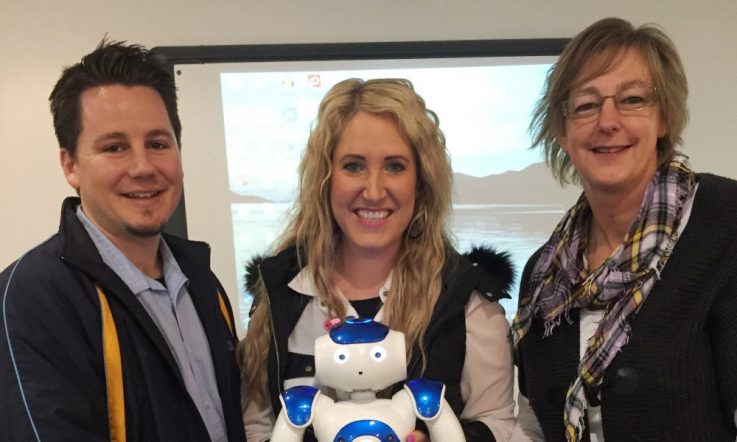Piracy and copyright infringement have been making headlines in recent months.
This is not only as a result of Australia reportedly having one of the highest rates of infringement in the world – but also due to the legal victory in May of the owners of the film Dallas Buyers Club, in which the Federal Court ordered several Australian ISPs to hand over personal details of more than 4700 customers alleged to have illegally downloaded the film.
Amendments to the Copyright Act 1968 also passed in the Australian Senate in June 2015, enabling rights holders to go to court to block overseas websites that facilitate access to copyright-infringing material, including movies and music.
An independent study commissioned by not-for-profit organisation IP Awareness and conducted by Sycamore Research with Newspoll explored behaviours and attitudes of Australians to online film and television piracy. The findings revealed that 26 per cent of Australians aged 12 to 17 participate in some form of piracy activity.
Kate Lazar, Education Program Manager for IP Awareness, explains that the research revealing that ‘roughly one in four people in this group are active pirates [gives] us clear indications of a lack of understanding amongst them about the concept of copyright.
‘[Still] it was interesting to establish that pirating is not the social norm amongst Australians aged 12 to 17 despite the anecdotal assertion that “everyone does it”.'
In the 2014 study, 71 per cent of Australians aged 12 to 17 answered ‘no' when asked if they have ever been taught anything specifically about movie or television piracy at school by their teachers.
This is of no surprise to Lazar, who understands first-hand why the issue of copyright is very complex in the school environment.
She is an experienced teacher with postgraduate qualifications in education leadership, and believes that ‘As a teacher, you work within a set of rules and guidelines about accessing copyrighted material in the process of teaching your students. But I had not given much thought to the relationship of students to copyrighted material in an outward-facing sense. And I understand why teachers approach copyright and all its complexities on a need-to-know basis.'
Lazar was more surprised to learn that 20 per cent of active teen pirates download or stream pirated material at school and says it is important for educators to be aware that websites which facilitate access to copyright-infringing content pose dangers for young users.
The IP Awareness study shows that 53 per cent of 12- to 17 year-olds who use illegal websites to access pirated content recall viewing gambling advertisements and 43 per cent have seen adult industry or R-rated advertisements.
This supports recent academic research which found piracy websites are increasingly dependent on high-risk advertisements as their primary means of profit (Watters, 2013). Children who access illegal sites to download copyright-infringing movies and TV shows may be exposed to graphic pornographic advertisements, unregulated gambling sites, scams and viruses.
‘Communicating cyber safety is a priority in schools and it is important for educators to understand that inappropriate content proliferates on pirate websites,' Lazar states.
She believes it is important to encourage and support educators and students to embrace and shape the principles of digital citizenship. ‘Teaching students to engage safely online is a priority. Discussions around behaving responsibly and respectfully online are also essential. We'd like to see the conversation bring into a sharper focus that good digital citizens respect copyright and the work of others.'
Lazar admits that discussions around online piracy sometimes appear counterintuitive to teenagers, whose instincts as ‘digital natives' are to view, like, share, forward and mash content which may be their own or others'.
‘There is clearly a tension between their instinctive approach to consuming content, and the reality that professional creatives depend on the right use of their work for their livelihood. We strive to encourage an understanding that paying for what you watch and listen to ensures the creators are rightfully remunerated. Understanding this is integral to good digital citizenship.'
Lazar says the frequency of piracy activity increases with age, underscoring the need to reach out to both primary and secondary schools. Amongst 12- to 13-year-olds it is at 14 per cent and for 16- to 17-year-olds it is at 36 per cent.
The IP Awareness Foundation uses research insights to produce curriculum-linked education resources in conjunction with education specialists that offer teachers and students an engaging path to the understanding and appreciation of copyright and a nuanced approach to the subject of copyright infringement.
‘We work to raise awareness within school communities that any discussion around ethical behaviour in the digital realm should recognise that accessing intellectual property via unauthorised websites or sources is a practice that jeopardises the sustainability of our creative communities,' Lazar explains.
So, how effective have the organisation's resources been in helping teachers and students navigate this topical and often controversial issue? Lazar says it is logistically difficult to measure outcomes beyond anecdotally but cites positive feedback from teachers and outreach from principals who want their schools to more deeply engage on digital citizenship as part of their wellbeing programs.
Brett Lamb, a teacher of VCE Media at East Doncaster Secondary College in Melbourne, Victoria, has used the foundation's Making Movies resource in the classroom and reports that his students were intrigued by the filmmaking process and ultimately became more aware of how piracy affects the industry.
‘[The resource] is not about convincing students that piracy is wrong. It's about developing a more sophisticated understanding of the filmmaking industry. Students who undertake VCE Media are interested in the media and often consider pursuing employment in this area. Making Movies is designed to develop their understanding of the filmmaking process and its enormous complexity,' Lamb says.
‘As digital technology makes filmmaking more accessible and opens new ways to distribute films, the industry is trying to keep up with the pace of change. In my classroom, the tension between new technology and existing business models has provided students with an opportunity to engage in deep learning by developing their appreciation of these layered issues.
‘After learning about the stages and roles in the film production process, students were certainly more aware of how consumer behaviour is influencing the industry'.
Kate Lazar is Education Program Manager at the IP Awareness Foundation. She is an experienced classroom teacher and holds a Masters of Education in Leadership (Secondary).
To download the full research report visit http://www.ipawareness.com.au/research/2014
Download IP Awareness Foundation’s free online teaching resources (with lesson plans, assessment tasks and engaging bespoke audio-visual material) at www.nothingbeatstherealthing.info or www.ipawareness.com.au. Topics include Making Movies, Digital Citizenship, Copyright and Cyber Safety and Persuasive Language. Rabbit-Proof Fence provides insight into Phillip Noyce’s 2003 film about the Stolen Generations.
ATOM (Australian Teachers of Media) and the IP Awareness Foundation collaborate on a national short film competition, My Story My Content, now in its third year. It is designed for primary and secondary students to celebrate creativity and help them understand why their creativity, and others’, is worth protecting. Entries close August 10 – mystorymycontent.com



